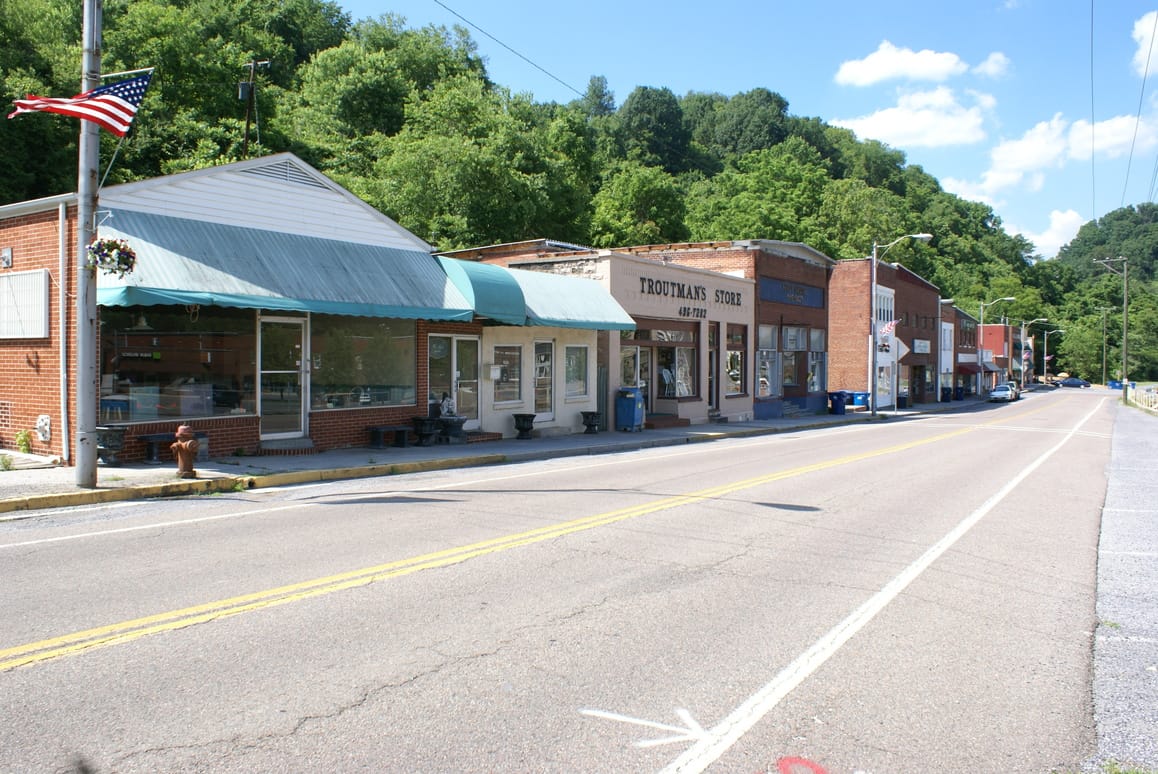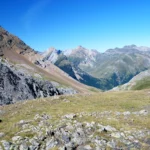Nestled in the Appalachian Mountains of Southwest Virginia, Saltville is more than just a town; it’s a journey through time. From prehistoric salt marshes to Civil War battlefields, this unassuming locale offers a captivating blend of natural beauty, history, and small-town charm. Prepare to uncover the secrets of Saltville, a place where the past whispers through the mountains and echoes in the heart of a resilient community.
Exploring Saltville’s Rich History
Saltville’s story begins with salt, the very mineral that gave the town its name. For thousands of years, natural salt deposits have drawn animals and people to this unique location. Native Americans recognized the value of this “white gold,” using it for preserving food. This likely made Saltville an important gathering place, a hub of activity in the vast wilderness. Later, settlers established a thriving salt industry, transforming Saltville into a bustling boomtown. [https://www.lolaapp.com/saltville-virginia]
Saltville’s strategic location in the Shenandoah Valley also made it a key player during the Civil War. Two major battles were fought here, profoundly impacting the town and its people. The same salt that sustained life fueled conflict, shaping the destiny of a nation. [https://www.lolaapp.com/where-was-the-battle-of-saltville] Discover the beauty and significance of the ostensorium monstrance, an elaborate vessel used in religious ceremonies.
But Saltville’s history stretches back even further. Archaeological digs, like the one at the SV-2 site, reveal settlements dating back thousands of years, suggesting continuous human presence for millennia. Ongoing research continues to uncover new information about these early inhabitants, their lives intertwined with the salt marshes.
What Makes Saltville Unique?
Saltville isn’t just famous for its salt; it’s a place where history, nature, and culture converge. [https://www.lolaapp.com/what-is-saltville-va-famous-for] The town sits atop an ancient inland sea, the remnants of which left behind massive salt reserves.
The Museum of the Middle Appalachians offers a vibrant exploration of the area’s geology, paleontology, and human history. Exhibits detail the formation of the salt deposits, the prehistoric creatures that once roamed the area, and the evolution of the salt industry. The museum also highlights the crucial “Saltville Battles” of the Civil War, fought for control of the vital saltworks.
Beyond the museum, the landscape itself tells the story of salt. The Salt Trail, an eight-mile stretch connecting Saltville to Glade Spring, offers a journey through time, with interpretive signs and markers bringing the past to life. Some historians believe this trail will be invaluable in conveying the significance of the salt industry to the region.
Saltville also boasts a unique ecosystem: the Well Fields. These high-altitude salt marshes are a surprising anomaly, creating a haven for diverse bird and fish species. The Well Fields Recreation Area provides the perfect setting to enjoy this natural wonder, whether fishing, hiking, or simply relaxing amid the tranquil scenery. Unveiling the hidden symbolism of the sand dollar and doves artwork, a captivating exploration of faith and spirituality.
Nature lovers will find plenty to explore beyond the Well Fields. Saltville’s location on several themed trails, including the Crooked Road Heritage Music Trail and the Virginia Birding & Wildlife Trail, adds to its appeal. The town is also emerging as a hub for artisans and craftspeople, further enriching its vibrant character.
Ongoing research and archaeological digs continue to reveal new insights into Saltville’s past and potential future. While much is known about the role of salt in shaping the town, there’s probably much more to discover.
Saltville’s Mountainous Setting
Saltville isn’t just near the mountains; it’s nestled within the Appalachian range, specifically the Valley and Ridge province. This unique location gives Saltville its distinct character, a blend of mountain majesty and valley tranquility. [https://www.lolaapp.com/is-saltville-va-in-the-mountains]
The Well Fields, high-altitude salt marshes, are a remarkable natural feature. This unusual elevation creates a specialized ecosystem, a sanctuary for unique plants and animals. The Well Fields Recreation Area offers access to this natural treasure, where visitors can enjoy hiking, fishing, and the serenity of the surrounding mountains.
Saltville’s history is layered, beginning with prehistoric hunters and leading to the influential salt industry. During the Civil War, Saltville became a focal point, witnessing crucial battles that shaped the town and its people. The Museum of the Middle Appalachians provides a compelling exploration of the region’s past, showcasing how geology, paleontology, and salt shaped its identity.
Saltville is a vibrant community with a flourishing creative scene. The Salt Trail, an eight-mile path connecting Saltville to Glade Spring, offers a journey through history and nature. Saltville is also home to talented artists like Georgia Blizzard (ceramics), Clay Davidson (country music), and Texas Gladden (traditional mountain music). These artists contribute to the rich cultural tapestry that makes Saltville so unique.
Saltville is a place where natural beauty, history, and a vibrant community intertwine. From the high-altitude salt marshes to the echoes of the past, Saltville has a story to tell, a story that continues to unfold.
The Battles of Saltville
During the Civil War, Saltville’s saltworks became a strategically vital resource, leading to two major battles in the surrounding areas. [https://www.lolaapp.com/where-was-the-battle-of-saltville] The first battle, in October 1864, took place northeast of the town, near Sanders’ Hill, which gave the Confederate defenders a tactical advantage. The second battle, in December 1864, occurred to the east and south, with intense fighting around Clinch Mountain.
The exact boundaries of these battlefields remain somewhat unclear. Battles rarely adhere to neat lines on a map, often spilling into surrounding areas. Our understanding of the locations comes from historical accounts, including soldiers’ letters, official reports, and archaeological findings. However, ongoing research continues to refine our knowledge, and some historians suggest that skirmishes may have extended further than previously thought.
| Battle of Saltville | Date | Location |
|---|---|---|
| First Battle | October 1864 | Northeast of Saltville, near Sanders’ Hill |
| Second Battle | December 1864 | East and south of Saltville, near Clinch Mountain |
While the precise details of every movement during these chaotic battles may remain elusive, it’s likely that the main fighting occurred within a few miles of Saltville. This proximity highlights the critical importance of the saltworks to both sides of the conflict. The battles for Saltville weren’t just about controlling a town; they were about controlling a resource that could influence the war’s outcome.
Additional Insights into Saltville
- Salt’s Significance: Saltville’s salt deposits attracted prehistoric wildlife, as evidenced by the SV-2 site excavations. Salt production became central to the town’s economy, though the 1924 “Muck Dam” disaster, caused by the Mathieson Alkali Company, had devastating environmental and human consequences, shifting the town’s focus toward recovery. The saltworks were crucial during the Civil War, leading to two major battles for control of this vital resource.
- The Well Fields Ecosystem: The Well Fields, high-altitude salt marshes, are a unique habitat for diverse species of birds and fish, making it a prime location for birdwatchers and nature enthusiasts.
- Cultural & Historical Attractions: The Museum of the Middle Appalachians showcases the region’s geology, paleontology, and history, including exhibits on salt production and the Civil War. The Salt Trail, under development, will connect Saltville to Glade Spring, offering recreational opportunities and historical interpretation.
- Location & Accessibility: Saltville is situated in Smyth and Washington counties, Virginia, easily accessible from I-81, and is part of the Kingsport–Bristol (TN)–Bristol (VA) Metropolitan Statistical Area. The town’s population is approximately 2,000.
- Arts & Culture: Saltville is home to notable artists like Georgia Blizzard (ceramics), Clay Davidson (country music), and Texas Gladden (traditional mountain music). The town is located on or near several themed trails, including the Civil War Trails, The Crooked Road Heritage Music Trail, the Virginia Birding & Wildlife Trail, and the Round the Mountain artisan trail.
By exploring Saltville’s rich history, unique ecosystem, and vibrant culture, one can appreciate the enduring charm of this Appalachian mountain town. A visit to Saltville offers a chance to connect with a place where time slows down, and the whispers of the past mingle with the promise of the future.

















1 thought on “Saltville, Virginia: A Journey Through Time, Salt, and Appalachian Charm”
Comments are closed.